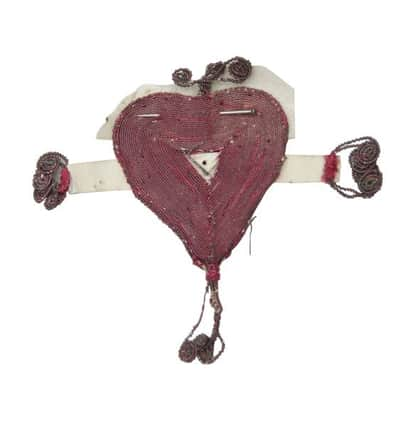Dr Gary Clapton: Tokens of love left for children given up to care tell a moving story of regret and loss


The history of orphanages is still being written. The Child Abuse inquiry is hearing from many people who, as children in care in Scotland, suffered from having no family to protect them. Quarriers Homes, Barnardos and Aberlour Children’s Charity are some of the charities which have had to acknowledge the dark side of separation of children from their families. Birthlink’s work in helping to connect adults affected by adoption and care often involves the records from agencies such as these. As old files are opened we have discovered decades-old photographs, letters and memorabilia, and the secret histories of those affected.
The Foundling Hospital, which continues today as the children’s charity Coram, was established in 1739 by the philanthropist Thomas Coram to care for babies at risk of abandonment.
Advertisement
Hide AdAdvertisement
Hide AdWhen it opened it took in children who had been abandoned, or whose parents were unable to care for them. London in the 18th century was a place of grinding poverty and sky-high rates of infant and new mother mortality. It is estimated that 1,000 babies a year were abandoned in London alone. Most of the infants received at the Foundling Hospital were under 12 months. In many instances, children were given over to the hospital on the grounds that, it was hoped, their parents would return for them.
In the Foundling Museum, which explores the history of the hospital, there are on display ‘tokens’ that parents would ask to be kept with and for their children. These were small items or notes that mothers left with their children as a means of identification when, they hoped, they were able to return to claim their child.
These tokens are hugely moving to see. A small coin, probably ill-afforded, or a bead, ribbon or a drawing; many of them came with the child’s name, date of birth or an address. Some were simply a twist of fabric. But others were a piece of verse or a poem. On arrival and admission of the infant, any accompanying tokens were sealed with a note that contained information about the child and then stored away. Unless a mother returned, the child might never see the token left for them.
The tokens represented love, a hope to return, a physical reminder of the enduring connection between a mother and the baby she had to relinquish. The ‘foundlings’ as the children were known, inspired characters in Charles Dickens’ novels including the apprentice Tattycoram in Little Dorrit. There are parallels between the history of the Foundling Hospital and our work at Birthlink. Throughout the 20th century children were still being fostered or adopted ‘out’ in many cases because of reasons beyond the control of parents. Our work in their records has turned up similar tokens of regret, signifiers of a lasting connection and, in some cases, hope that there will be a reunion someday.
Mostly though it is simply patient work scanning through files, some of which consist of just three sheets, but others are so extensive and weighty that it takes a full day to read. Often troubling is the lack of presence of the parent, or at least their side of the story. The records tend to focus solely on the child and their prospect of an adoptive family or the system requirements of a case to be made out for removal of the child from their parents – invariably the latter is an account riddled with all the instances of parental failure. Either way, in the files we read, it is difficult to discern the human presence of a parent who has lost their child.
For me this is what is very moving about the Foundling Museum’s exhibits. The trinkets that act as keepsakes and the notes written on scraps of paper are physical reminders of regret and loss, but also hope.It is not clear how often the children, as adults, had the opportunity of laying their hands on these.
What I do know about today’s work is that when we come across a photograph, letter or receipt for baby clothes, the past immediately comes to life, and depth and extra meaning are leant to the records.
Those active today in adoption and fostering should take heed of the importance of recording everyone’s story. However, in an increasingly digital age, though much can be scanned, where might we store tokens?
Dr Gary Clapton for Birthlink.